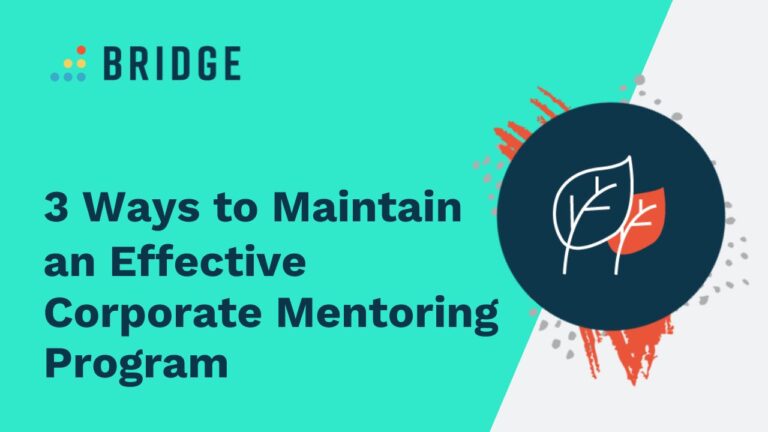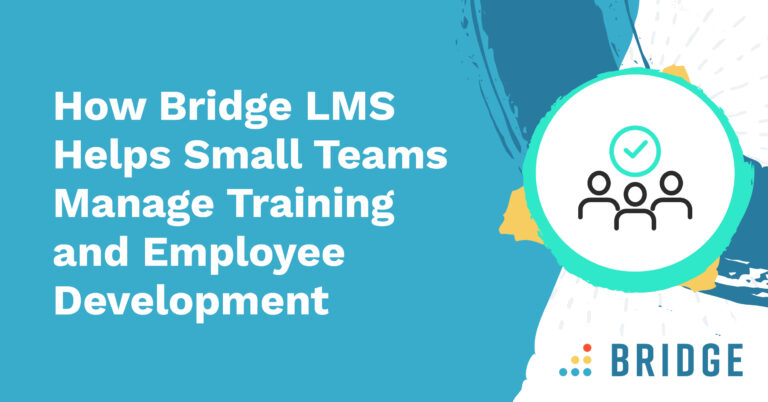Picture the scene: you’ve planned out the perfect mentorship program. Your talent platform has matched your mentees with their ideal mentors. In short, you’re all set. This is a great start—but how do you maintain this success across the whole mentoring cycle?
Setting up your mentorship program is one thing, but ensuring its longevity is an entirely different beast. You’ll need to monitor the cycle of mentor-mentee relationships, keep your mentors well-versed in the skills they need in order to share their wisdom effectively, and find ways to evaluate the success of your program.
This step matters. Mentorship isn’t a one-and-done event, but a key component of an entire culture of skills development. When new technologies are on the horizon, when workforce churn remains a fact of life, and when unexpected skills gaps continue to form, it’s essential to have a well-oiled infrastructure for keeping your people prepared.
If you’re keen to keep your program well-oiled, you’ll need to know which parts are starting to show signs of a little wear and tear. Let’s talk about the ways you can evaluate your mentoring scheme—and how to support the mentors that’ll keep it in tip-top condition.
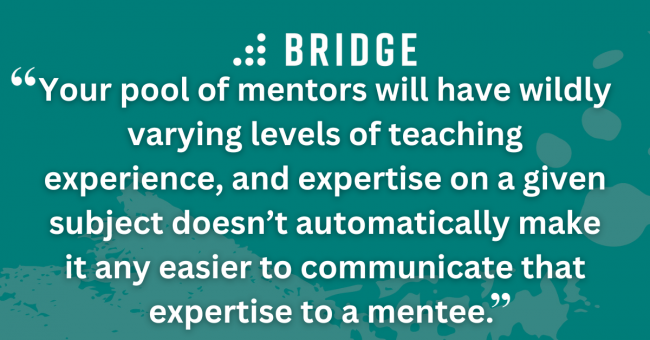
Providing Ongoing Support and Resources
Mentoring doesn’t (or, at least, shouldn’t) exist in a bubble. It’s part of the broader ecosystem of professional development, and it’s expected to operate alongside supplementary resources like learning, gig work, and networking.
Admins can help mentees to take full advantage of these resources by incorporating the right technology into the process. Talent and skills platforms, for example, will be able to tie career objectives to the skills that complement those objectives, creating deep compatibilities between recommended mentors, training courses, and short-term project work. By leveraging these additional modes of career growth, you’ll ensure that the weight of expectation on your mentors’ shoulders isn’t too heavy—encouraging them to continue mentoring well into the future.
A good mentorship program will also include direct support for the mentor side of the operation, too. Your pool of mentors will have wildly varying levels of teaching experience, and expertise on a given subject doesn’t automatically make it any easier to communicate that expertise to a mentee. As such, you might consider offering your mentors training in the skills that make a good mentor and forming communities of mentors looking to gain those skills.
This is an essential step, not only to ensure that your mentors are held to a high standard, but to ensure that both mentors and mentees are willing to engage in long-term participation in your program. After all, poor-quality mentoring or a lack of organizational support for your mentors could lead to disengagement from the program. Disengagement is never good news, but it would really sting in the context of mentoring, since—according to Gartner—bringing your people together in new ways is supposed to strengthen employee engagement.
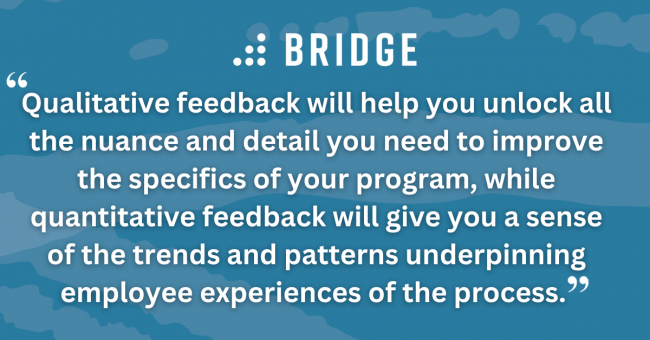
MORE FROM THE BLOG | ‘4 Cross-Stakeholder Benefits of a Talent Marketplace’
Evaluating Program Effectiveness
Administering a successful mentorship program requires the obvious (but vital) step of recognizing what success looks like—and how to get there. There are a few options here, from a holistic integration with your performance platform to simply asking the people involved. Let’s explore their merits.
1) Direct Feedback
The most straightforward way to measure the success of your program is to ask the mentors and mentees sitting at the heart of the process. By using employee survey software, you’ll have no trouble authoring surveys that allow you to quickly and comprehensively ascertain how your mentoring program is being felt from the front lines. Try to ask questions that cover:
- General satisfaction
- The quality of the mentoring relationship
- Goals and milestones achieved through the process
- The effectiveness of mentor-mentee communication
- Adherence to guidelines around meeting frequency and conduct
- The support received from program administrators
- Suggestions for improvements
Be sure to frame your questions around both qualitative and quantitative responses. Qualitative feedback will help you unlock all the nuance and detail you need to improve the specifics of your program, while quantitative feedback will give you a sense of the trends and patterns underpinning employee experiences of the process.
As if this kind of feedback wasn’t handy enough, you might just find that your surveys come with a few fringe benefits. That’s only to be expected when 74% of employees feel they work more effectively if they believe their voices are being heard.
KEEP READING | ‘4 Ways to Fuel Employee Engagement With Skills Development’
2) Performance Management Metrics
Mentorship is built around goals. Nobody seeks mentoring for mentoring’s sake: your mentees are looking for some kind of outcome, whether it’s a career step, a new skill, or even a change of attitude. Whatever the goal might be, it’ll be something you can measure—if only to say that it’s been completed. And when your mentees are hitting their goals, you can be sure that your program is working (and if not, it might be time to have a rethink).
By throwing a performance management system into the mix, you can add nuance to your understanding of program success rates. Incorporating goal-tracking and one-on-one meeting data from a performance system into your mentoring program will give you serious insight into mentee progress—and, by extension, the success of your mentoring program.
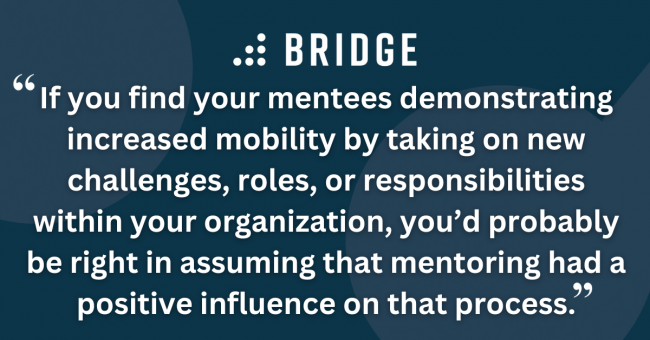
3) Internal Mobility Rates
Given that career growth is a key incentive for seeking out mentorship, one way to assess your program’s success is to see if any of your mentees’ careers have actually grown.
If you find your mentees demonstrating increased mobility by taking on new challenges, roles, or responsibilities within your organization, you’d probably be right in assuming that mentoring had a positive influence on that process.
Having said that, internal mobility rates are best used in conjunction with the metrics discussed earlier. Mentoring can absolutely have an impact on internal mobility, but employee movement is dependent on a whole ecosystem of professional development strategies.
In many ways, mentorship is only as effective as the support that surrounds it—and any good mentoring program will leverage talent platforms, performance management systems, and a tailored set of processes and guidelines to make that support happen. Ultimately, it’s these savvy administrative moves that will propel your people to new and exciting heights within your organization.
DISCOVER HOW TO IMPLEMENT PERFORMANCE SOFTWARE | ‘Rolling Out Your Performance Management System: 3 Critical Factors to Consider’
Want to Get Positive Feedback for Your Mentoring Efforts?
Download our full ebook, ‘3 Elements of a Successful Mentoring Program,’ to get the full story for perfecting the ideal mentor-mentee relationship. From initial planning right the way through to ongoing maintenance, we’ve got your covered.
